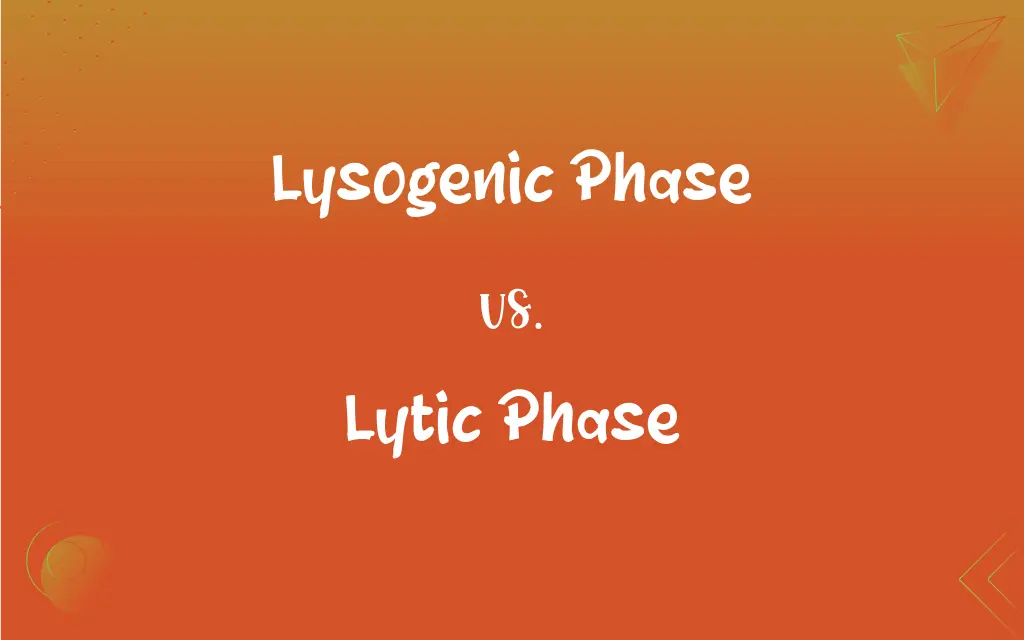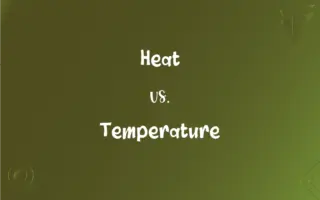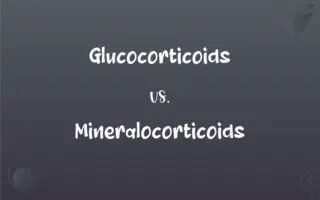Lysogenic Phase vs. Lytic Phase: What's the Difference?
Edited by Janet White || By Harlon Moss || Updated on October 29, 2023
In the lysogenic phase, the virus integrates its DNA into the host without causing damage; in the lytic phase, the virus replicates and destroys the host cell.

Key Differences
The lysogenic phase and the lytic phase are two stages in the lifecycle of bacteriophages, which are viruses that infect bacteria. During the lysogenic phase, the viral DNA integrates itself into the host bacterium's DNA, becoming a prophage, without causing immediate harm or lysis. In contrast, the lytic phase is an active stage where the virus takes over the host's cellular machinery to replicate itself, leading to the eventual bursting and death of the host cell.
When discussing the lysogenic phase, it's essential to understand its latent nature. This phase is akin to a state of dormancy for the virus. The viral genetic material is incorporated into the host genome, awaiting a trigger to activate the lytic phase. On the other hand, the lytic phase is a dynamic and often destructive phase for the host bacterium. As the viral particles multiply within the cell, they eventually cause the cell to rupture, releasing the new virions to infect other cells.
Another crucial distinction between the lysogenic phase and the lytic phase is how they impact the host organism. In the lysogenic phase, the host cell continues its normal functions, potentially for a long duration, as the viral DNA remains dormant within its genome. The lytic phase, conversely, is detrimental to the host cell. As the viruses replicate, they utilize the host's resources, culminating in the cell's lysis and the spread of the newly produced viruses.
It's also worth noting that certain environmental triggers can cause a shift from the lysogenic phase to the lytic phase. Stressors such as UV radiation or certain chemicals can prompt the prophage to exit the lysogenic phase and enter the lytic phase. While the lysogenic phase might seem benign, the potential for a switch to the lytic phase makes it a ticking time bomb. The lytic phase, with its characteristic replication and lysis, is a clear and immediate threat to the host cell.
Comparison Chart
Nature
Latent or dormant phase
Active viral replication phase
ADVERTISEMENT
Impact on Host Cell
Incorporates DNA without harming cell
Leads to host cell destruction
Outcome for Virus
Becomes integrated as prophage
Produces many virus particles
Duration
Can be long-lasting
Relatively short and ends with cell lysis
Trigger for Transition
Environmental stressors can activate to lytic phase
Completion of viral replication cycle
Lysogenic Phase and Lytic Phase Definitions
Lysogenic Phase
Lysogenic phase allows the host cell to function normally.
In the lysogenic phase, the bacterium continues its regular activities while harboring the viral DNA.
ADVERTISEMENT
Lytic Phase
Lytic phase uses the host's resources for replication.
During the lytic phase, the virus exploits the host cell's machinery to its advantage.
Lysogenic Phase
Lysogenic phase can be triggered to switch to the lytic phase.
Under certain conditions, the lysogenic phase can transition to the more aggressive lytic phase.
Lytic Phase
Lytic phase involves active viral replication and host destruction.
In the lytic phase, the virus multiplies rapidly, leading to the host cell's rupture.
Lysogenic Phase
Lysogenic phase involves viral DNA integration into the host genome.
The virus in the lysogenic phase becomes a part of the bacterial DNA without immediate harm.
Lytic Phase
Lytic phase leads to the death of the host cell.
The final stages of the lytic phase see the bursting open of the host cell, releasing new virions.
Lysogenic Phase
Lysogenic phase is a latent stage of the viral life cycle.
A bacterium can unknowingly carry a virus in the lysogenic phase for an extended period.
Lytic Phase
Lytic phase results in the production of many viral particles.
Once the lytic phase is initiated, many new virions are produced inside the host cell.
Lysogenic Phase
Lysogenic phase is the virus's dormant stage within a host.
During the lysogenic phase, a virus might lie in wait without causing symptoms.
Lytic Phase
Lytic phase is the culmination of the viral infection process.
The end goal of a virus is often to reach the lytic phase, producing many copies of itself.
FAQs
Is the host cell destroyed in the lysogenic phase?
No, during the lysogenic phase, the host cell remains intact and functional.
Can a virus switch between the lysogenic phase and the lytic phase?
Yes, certain triggers can cause a virus in the lysogenic phase to shift to the lytic phase.
How does the host cell recognize and respond to a virus in the lysogenic phase?
In the lysogenic phase, the viral DNA is often dormant and may not elicit a strong immune response.
Are there any benefits for a virus to enter the lysogenic phase instead of the lytic phase?
Yes, the lysogenic phase allows the virus to persist in the host for extended periods without detection or destruction.
Is the lytic phase always short-lived?
The lytic phase, compared to the lysogenic phase, is relatively short as it ends with the destruction of the host cell.
Can multiple viruses be in the lysogenic phase within a single host cell?
Yes, it's possible for multiple prophages (viral DNAs) to be integrated into a host's genome.
Do all viruses undergo both the lysogenic phase and the lytic phase?
Not all viruses exhibit both phases; some only undergo the lytic phase.
What happens to the viral DNA during the lysogenic phase?
During the lysogenic phase, the viral DNA integrates into the host genome and remains dormant.
What is the primary goal of the virus in the lytic phase?
The primary goal in the lytic phase is to replicate and produce many virus particles.
Can a virus revert back to the lysogenic phase after entering the lytic phase?
Typically, once the lytic phase is initiated, it proceeds until the host cell is lysed.
Is a bacterium infectious during the lysogenic phase?
While the bacterium may harbor the virus during the lysogenic phase, it doesn't release virions, making it less infectious.
How does the host's immune system respond during the lytic phase?
During the lytic phase, the immune system may recognize and attack the infected cells to prevent further viral spread.
Why is the lytic phase considered more virulent?
The lytic phase is considered more virulent because it leads to active viral replication and the destruction of the host cell.
What is the lysogenic phase?
The lysogenic phase is a dormant stage where the virus integrates its DNA into the host without causing immediate harm.
How does the lytic phase differ from the lysogenic phase?
In the lytic phase, the virus actively replicates and destroys the host cell, whereas the lysogenic phase is more latent.
Can a bacterium function normally during the lysogenic phase?
Yes, during the lysogenic phase, the host bacterium continues its regular activities.
Is the lytic phase always harmful to the host organism?
Yes, the lytic phase results in the destruction of the host cell and is thus harmful.
When does cell lysis occur in the lytic phase?
Lysis occurs at the end of the lytic phase when the virus has replicated sufficiently within the host cell.
What triggers the transition from the lysogenic phase to the lytic phase?
Environmental stressors, like UV radiation or certain chemicals, can activate the transition.
How long can a virus stay in the lysogenic phase?
A virus can remain in the lysogenic phase for an extended period, potentially even years, until activated.
About Author
Written by
Harlon MossHarlon is a seasoned quality moderator and accomplished content writer for Difference Wiki. An alumnus of the prestigious University of California, he earned his degree in Computer Science. Leveraging his academic background, Harlon brings a meticulous and informed perspective to his work, ensuring content accuracy and excellence.
Edited by
Janet WhiteJanet White has been an esteemed writer and blogger for Difference Wiki. Holding a Master's degree in Science and Medical Journalism from the prestigious Boston University, she has consistently demonstrated her expertise and passion for her field. When she's not immersed in her work, Janet relishes her time exercising, delving into a good book, and cherishing moments with friends and family.































































